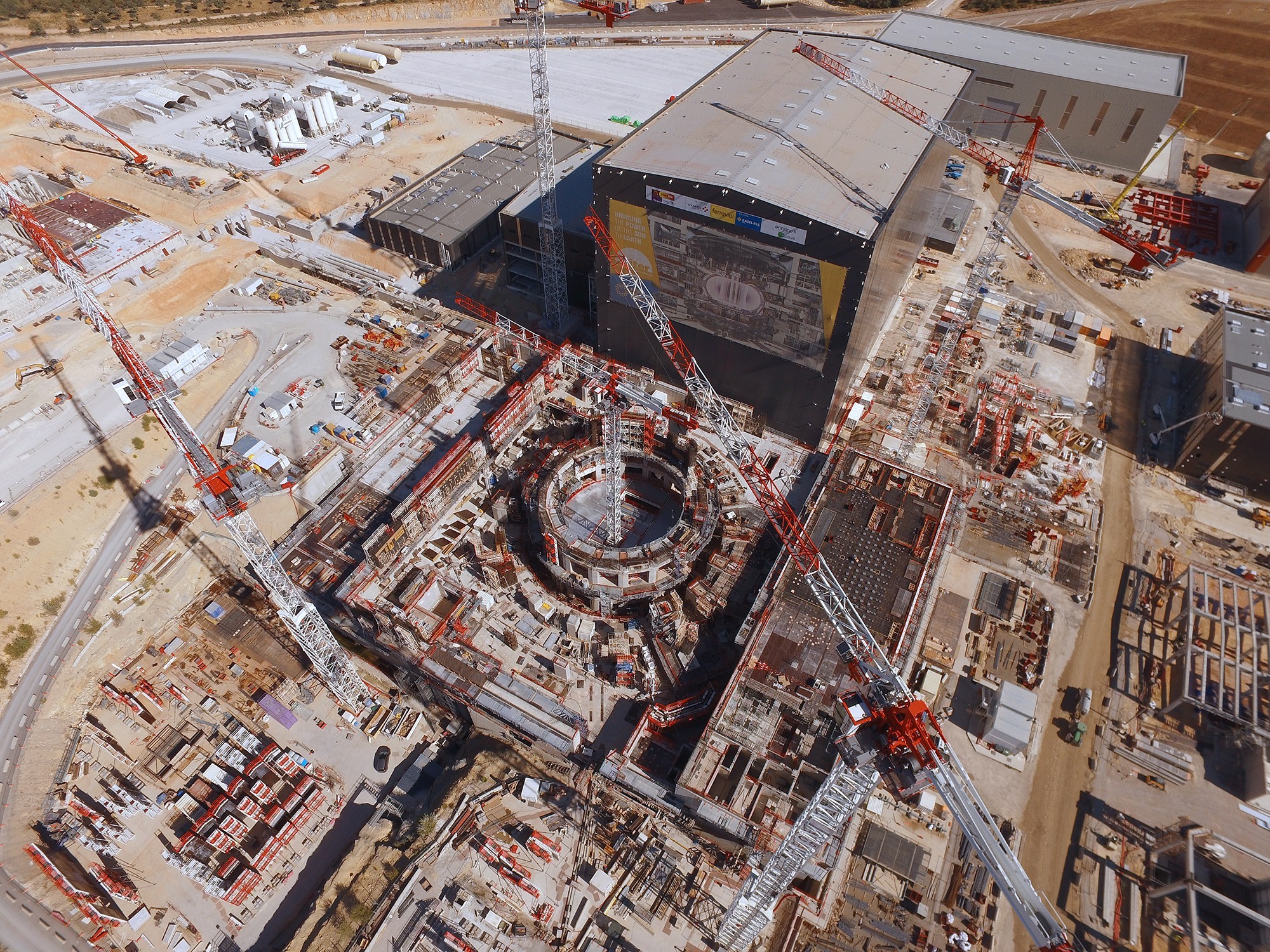Nuclear fusion is almost as old as the universe itself, dating back to the cores of the earliest stars. Getting the same process that gives us sunshine to work here on earth to provide almost limitless clean energy has proven incredibly difficult. But after 70 years of research, and a recent surge in private sector companies getting involved, fusion power looks like it will soon have its day in the sun.
Slow march to fusion
In the 1950s, researchers all over the world were attempting to build machines that could recreate the conditions found inside stars. But fusing hydrogen atoms together into helium to release energy is hard. It takes immense pressure and temperatures of around 150 million degrees to even start this reaction.
For years, countries like the Soviet Union and the United States competed to better each other’s machines, with research focusing on a device known as the tokamak, a doughnut-shaped magnet used to confine plasma.
Fast-forward to 1985, however, and an unprecedented collaborative project between the European Atomic Energy Community, Japan, the US and the Soviet Union, known as ITER, was born.
Over 30 years later and the collaboration is still going. Now, the project involves the EU, China, India, Japan, South Korea, Russia and the US. ITER aims to build a tokamak machine in southern France. The work is more than a decade behind schedule and its costs have spiralled.
There has been progress though. In 1997, at the Joint European Torus experiment (JET) at the Culham Centre for Fusion Energy in Oxfordshire, scientists generated 16 megawatts of fusion power. It required 25 megawatts to trigger the reaction, making the production inefficient, but it was still a huge step towards reaching the goal.
“From this massive achievement, it took seven governments 10 years to agree the location of the next prototype of ITER,” says Richard Dinan, CEO and co-founder of Applied Fusion Systems, a London-based private company attempting to build fusion reactors. “That's a decade wasted on politics.”
Enter the private sector
Now, in the face of slow progress, private companies are emerging to take on the challenge. “Increased private sector research into nuclear fusion reflects the huge prize at stake – an abundant, environmentally responsible and safe new way of generating electricity,” says Professor Ian Chapman, CEO of the UK Atomic Energy Authority.
It may be no wonder, then, that companies across the world are jumping into the race. In 2011, Amazon’s Jeff Bezos provided financial backing to Canada’s General Fusion, a start up attempting to build the world’s first fusion power plant. In May this year, company teamed up with Microsoft to harness its computing power to analyse General Fusion’s swathes of experimental results. Big data analytics is one of the reasons private companies can get involved in fusion research.
Most recently, in July this year, Google announced its own interest in fusion research. The search engine giant has been working on a computer algorithm that can speed up plasma experiments, in collaboration with Tri Alpha Energy, a private company backed by Microsoft co-founder Paul Allen.
US aerospace company Lockheed Martin’s Skunk Works project also announced in 2014 that it’s developing compact fusion reactors (CFR), which it says will be ten times smaller than previous concepts.
General Atomics, a defence contractor headquartered in San Diego, California specialising in nuclear physics is said to be part of the Chinese Fusion Engineering Test Reactor (CFETR) project, hoping to be the first fusion power plant.
Improvements in technology have also reduced barriers to entry by the private sector. Industrial processes for rapid prototyping like 3D printing are allowing companies like Applied Fusion Systems to make small, compact fusion reactors, iterating designs quickly.
Fusion remains a global challenge, however, and the countries involved in the ITER project remain the leaders, says Chapman. “The EU has the world’s largest device, JET, and has one of the strongest and most co-ordinated fusion research programmes, with a detailed roadmap to achieving electricity generation in the middle of this century.”
However, China still holds many of the current records. In July this year, the Experimental Advanced Superconducting Tokamak (EAST), led by the Chinese Academy of Sciences, beat a previous record for maintaining stable plasma, for 101 seconds, reaching a temperature of 50,000,000 degrees Kelvin.
The question is whether private companies will reach that goal faster. There is certainly a lot of competition encouraging them.

The ITER project under construction in southern France. A decade behind schedule and with spiralling costs, nimbler private sector companies are looking to leap-frog it with smaller designs (Image: ITER Organization)
The race to market
Oxfordshire-based Tokamak Energy, which started in 2009, is one of the leading private fusion energy companies. It produced the first plasma in its new ST40 tokamak device in April this year.
“The target is to reach a plasma temperature of 15 million degrees by the end of this year, 100 million degrees in 2018 and close to fusion energy gain conditions in 2019,” says CEO Dr David Kingham.
“We are aiming for first electricity in a pilot plant by 2025 and electricity into the grid by 2030, with the possibility of moving faster as we secure rapidly increasing amounts of investment.”
Applied Fusion Systems expects to have two small spherical tokamaks operable by 2022. “One as a power generator and one as a prototyping facility,” says Dinan.
There are two main publicly funded research routes to fusion. The first is magnetic fusion devices, such as JET and ITER. These use powerful magnetic fields to confine the hot gas of fusion fuels. Within this category, there are a number of potential devices, of which the tokamak is one.
The second is called “inertial fusion”, which uses powerful lasers or X-ray sources to implode small pellets of fuel. “Both of these avenues are being actively explored and there is no reason why both approaches do not make it to commercial reality,” says Chapman.
A question of scale
After decades of research, the tokamak is coming out as the winner. But there are still a number of technical challenges to overcome. “The tokamak design and these technology challenges point towards only relatively large scale fusion power stations being economically viable,” says Chapman, “although there is a drive to reduce the scale and cost of future power plants with so-called spherical tokamaks.”
But not everyone agrees that bigger is better. Advances in technology mean we can now achieve the same result without necessarily having to build something on a huge scale. “If you asked a scientist in 1997 how to guarantee success in a tokamak, they would tell you that it had to be big,” says Dinan. “Since then supercomputing costs have crashed and we know that understanding plasma behaviour is the key to smaller more efficient reactors.”
When it comes to the future of nuclear fusion, smaller scale projects could have one benefit, they would be faster to execute. “Big projects like ITER are great for international collaboration and for scientific research, but progress is going to be slow with such big projects,” says Kingham. “The future of fusion energy is smaller scale, probably not as small as truck-sized, but still a factor of 30 smaller than ITER in volume.”
The fusion reactors of the future could take many shapes and sizes. Tokamak Energy is focussing on a variant of the tokamak, which combines the benefits of a spherical tokamak, shown by a team at Princeton University, with high temperature superconductor magnets found at MIT. But this is not the only way forward. “There certainly could be more than one winner,” says Kingham.
And some reactors are much, much smaller. “The two reactors we are building at Applied Fusion have a major radius of 1.1 metres and are costing £40 million (US$52 million) each,” says Dinan. “That's quite different from the £12 billion (US$15 billion) ITER monster.”
Regardless of its shape or size, nuclear fusion is not a dream people are ready to give up on yet. The goal is just too appealing. With fusion power, the amount of water a person uses in one shower could provide all their energy needs for a whole year.
“Once commercially available, fusion will have a transformative effect on the electricity market,” says Chapman. “All fusion research programmes, whether publicly-funded or privately-financed, recognise that the prize of such a technology is worth pursuing.”








